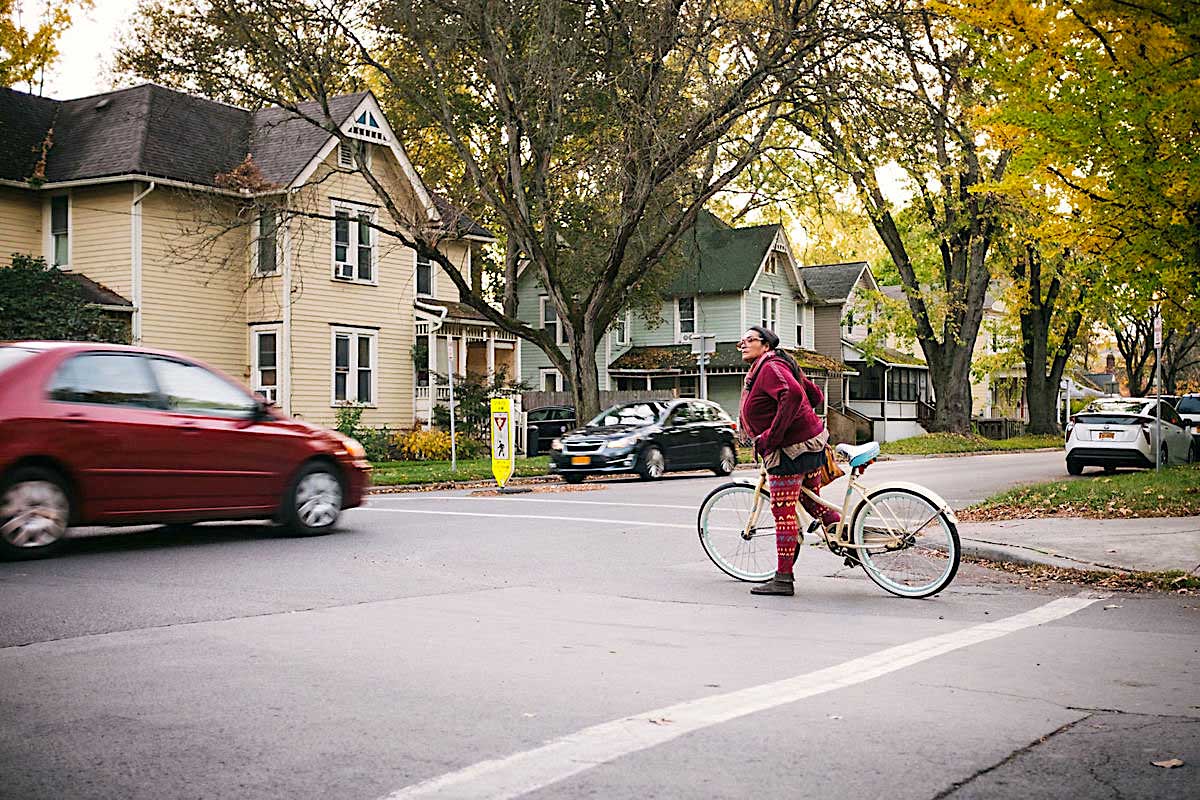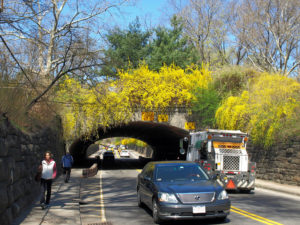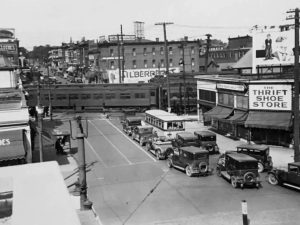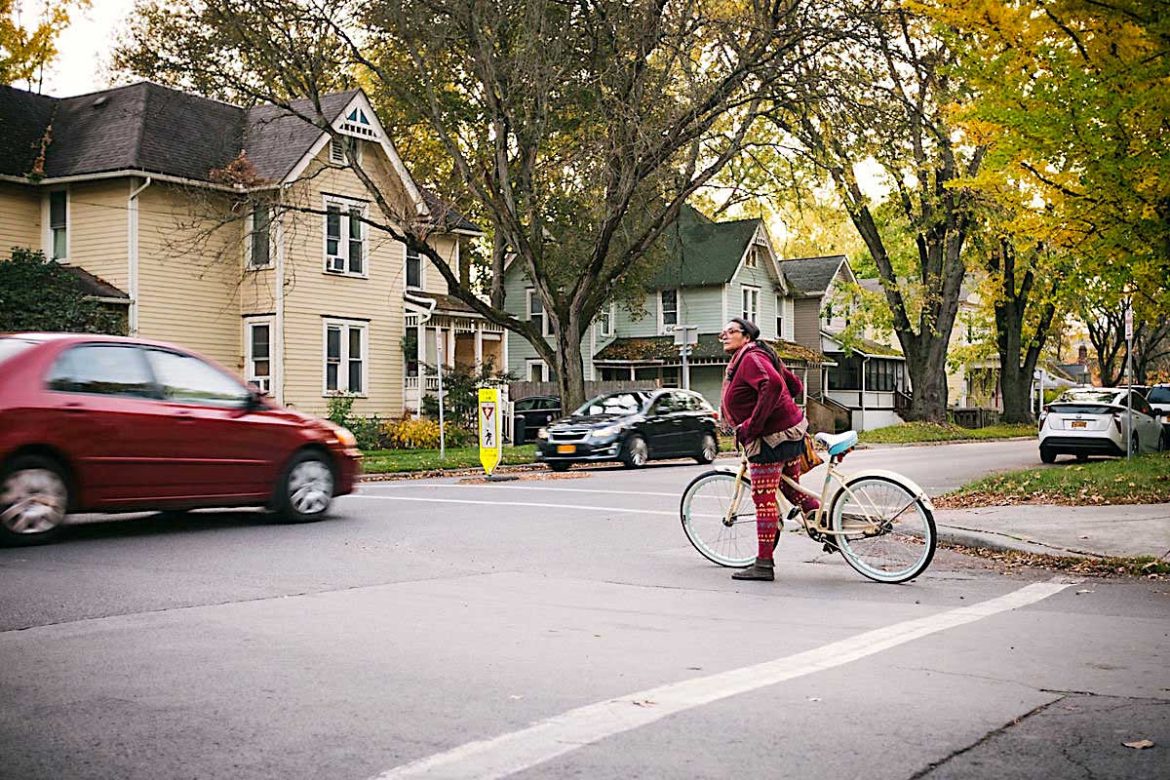
“On a crisp October evening, a small group—less than ten people—stood on the corner of Clinton and Plain, cars whipping by as they talked about the intersection behind them,” writes Nick Reynolds for the Ithaca Times. “Brought together for an event hosted by Bike Walk Tompkins, the group clustered around a sandwich board set up on the corner, talking about ways they as an organization could begin to put their minds to work in order to transform the intersection in a way that made it more walkable and more navigable for those on foot, on bikes or even behind the wheel of a car. Intently discussing the subject, the group’s conversation was interrupted as their attention went to a woman on the corner, who waited several minutes for an opportunity to cross as an endless stream of cars hissed by her and her two young children.” “Victoria Armstrong, director of Bike Walk Tompkins, had seen enough and, in a small gap in traffic flow, stepped out in the street, waving her arms.” “‘Do you think this intersection needs traffic control?’ she shouted with a smile.” “The rest of the group laughed with her. It was the exact thing the group had come here to discuss.” “Several weeks ago during the organization’s annual celebration of the pedestrian experience, Streets Alive! Ithaca, Bike Walk Tompkins demonstrated a technique called Tactical Urbanism that had been utilized throughout the nation to spur change in the way we navigate and engineer our city’s thoroughfares. A sort of mechanism of temporary engineering, the group had gone to work on this intersection with paint and traffic cones to bump out the curb to improve the line of sight for pedestrians and slow down traffic to a level to a speed where it would actually be forced to yield the crosswalk to pedestrians. In short, using a hunch based on their own observations, the group was able to test out a method of improving the intersection without any significant expense.” “Resembling programs implemented in Denmark, New York City (most prominently, in the early days of testing Times Square as a pedestrian zone) and in Burlington [Vermont], where it is employed often in order to test traffic improvements before they’re invested in, Tactical Urbanism comes from a relatively young school of thought among the more progressive arm of the planning community: Either working within the realms of the law or outside it, citizens for years have been making temporary changes to the streetscape, a sort of guerilla approach to neighborhood building that utilizes short-term, low-cost, and scalable interventions and policies to catalyze long term change.”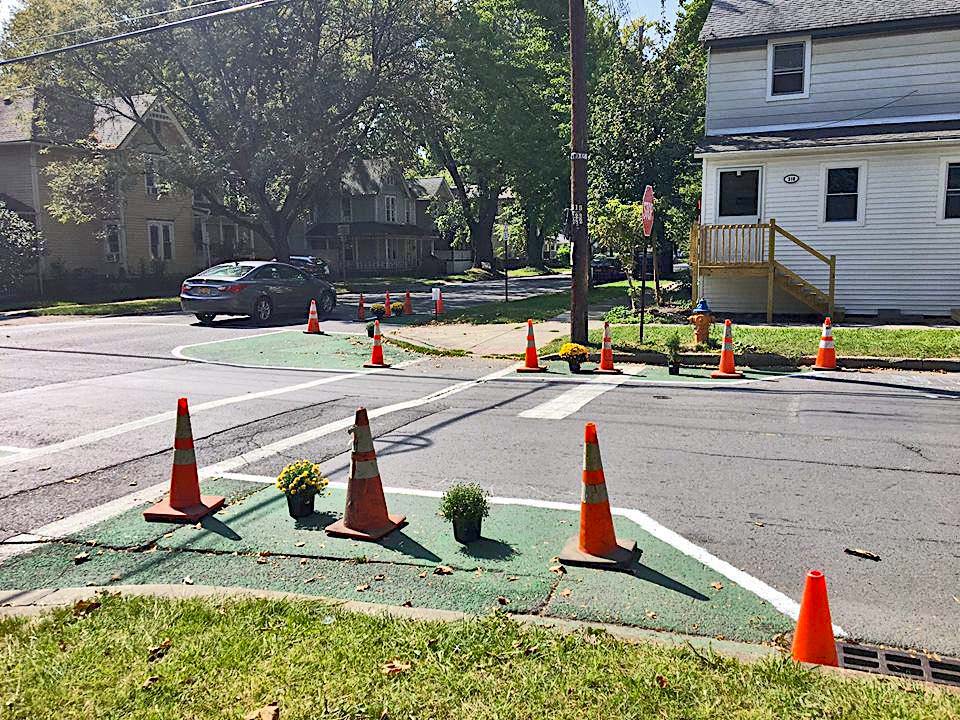
A temporary 'bumpout' installed at the same intersection during Streets Alive! in Ithaca, showing how temporary traffic calming measures can be installed on a city's streets. (Image credit: Ithaca Times)
A temporary 'bumpout' installed at the same intersection during Streets Alive! in Ithaca, showing how temporary traffic calming measures can be installed on a city's streets. (Image credit: Ithaca Times)



